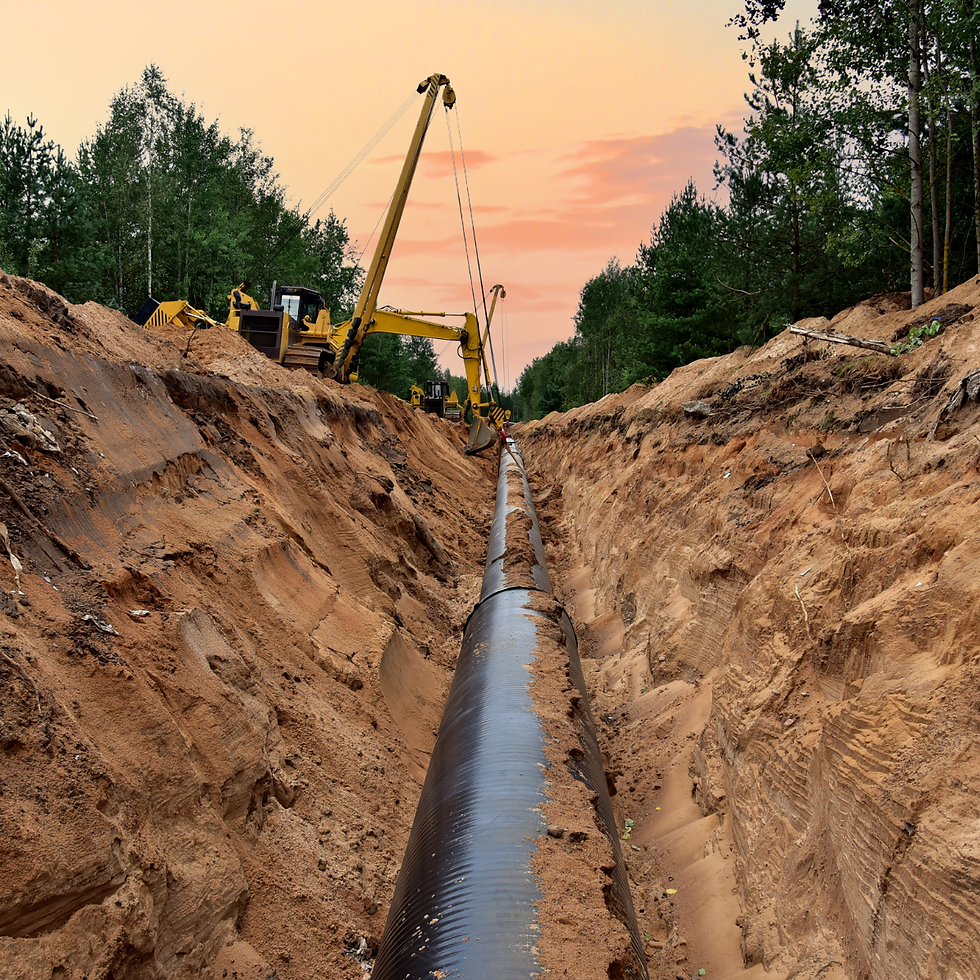Tips for When Back to School is a Return to Pollution Exposure
- Environmental Health Project

- Sep 11, 2025
- 4 min read
For most kids, fall brings the end of summer vacation and a return to school. For students whose school is one of the many surrounded by shale gas development (SGD) infrastructure, a return to school also means a return to heavy truck traffic, industrial noise, and air pollution. Data shows that there are currently over 3.1 million U.S. students going to school within half a mile of an active oil and gas well. This increased risk is a particular concern for families living in rural Pennsylvania, Ohio, and West Virginia, where shale gas development is expanding.

Parents have little control over their children’s exposure to pollution during the school day. Nevertheless, children typically spend about half of their waking hours at school. Due to nearby oil and gas activities, outdoor air may be unsafe during recess and gym class. Older school buildings with antiquated ventilation may trap harmful emissions inside. Parents should know about the potential exposure to air pollution at their children’s school.
Children are more vulnerable to SGD pollution because they accumulate more toxic chemicals in their bodies than adults. Children breathe more rapidly, and when exposed to air contaminants, they take in more toxic substances per pound of body weight than adults. These toxic substances are not efficiently cleared from their bodies, leading to greater accumulation than would be experienced at a later stage of development. The long-term health impacts are of particular concern because children’s brains are still developing, and toxic agents used in SGD interfere with brain development.
For these reasons, it is important to identify whether shale gas facilities are located nearby, how many, what types of infrastructure they are, and if related diesel trucks use roads in the same vicinity. You can identify the locations of oil and gas facilities at oilandgasthreatmap.com/threat-map.
Things to consider if your school district has shale gas activity.
Pollution Exposure from Common Air Emissions
All shale gas activities and facilities generate emissions. This includes pollution from construction sites, trucking to and from sites, drilling, flaring, the operations of compressor stations, metering stations, and processing plants. If children live or go to school near any of these facilities, they will likely be exposed to some level of emissions.
Particulate Matter (PM) is generated at all phases of the SGD process. Particulate matter is a complex mixture of extremely small particles and liquid droplets. The size of the particles is linked to their potential for causing health problems. Fine particulate matter is capable of passing through the nose and throat and can penetrate deep inside the lung. PM inhalation can aggravate asthma symptoms and cause decreased lung function, nonfatal heart attacks, and high blood pressure.
Volatile Organic Compounds (VOCs) are a varied group of compounds, such as benzene and formaldehyde, that are released from SGD. Short-term, high exposures can cause acute eye and respiratory tract irritation, allergic skin reactions, headaches, dizziness, visual disorders, fatigue, loss of coordination, and memory impairment. Possible long-term effects include damage to the liver, kidney, and central nervous system. Some VOCs are known or suspected carcinogens, substances that increase risk of cancer.
Shale gas emissions—and children’s exposure to those emissions—can be intermittent and varied. SGD infrastructure, such as well pads (a structural platform for drilling), develops over time, and so their emissions vary in content and amount. Also, facilities such as compressor stations and metering stations do not vent consistently. Periodically, there may be dangerous spikes of emissions. Sometimes children may be exposed to high concentrations of air contaminants; other times, their exposure may be more limited. Kids may be exposed to emissions from multiple shale gas related sources at once if there are many nearby.
Symptoms in Children that May Result from Exposure
The symptoms a child presents may be the result of air, water, or soil contaminants. The documented transient effects of SGD, such as rash, headache, nausea, asthma incidents, nosebleeds, and eye, nose, throat and lung irritation, are not unique to exposure to shale development emissions. However, these symptoms may be the result of sporadic or chronic exposure. Symptoms may point to a larger risk for your child. Persistent or recurrent symptoms signal a child may be experiencing chemical or PM exposure.

Fatigue, anxiety, and stress have been documented among children living close to SGD. Air pollution inhibits children’s physical development, outdoor activities, and healthy sleep patterns. Adolescents report greater fatigue and emotional distress on days that the air contained higher levels of nitrogen dioxide (NO2) and carbon monoxide (CO). Moreover, noise and light intrusion from SGD facilities make it difficult to sleep or even to relax when young people are home, which then negatively impacts academic performance upon returning to the classroom. Children may also react to caregivers who are feeling especially anxious or stressed as a result of the same exposures to SGD pollution.
What You Can Do
Identify the locations and types of SGD facilities near your child’s school or daycare.
Monitor for an increase in symptoms or for odd symptoms. Even common complaints like congestion and sinus pain can go on for longer than expected or occur in unusual patterns. These irregularities indicate possible impacts of SGD.
Keep a log that includes symptoms and when they appear. Also note environmental factors, including weather and observable activities at nearby SGD infrastructure. Learn more about keeping a health diary here.
Report concerns to school administrators and your local or state health department.
Talk to decision makers at your child’s school about monitoring and improving air quality in the building.

Poor air quality causes kids to miss school or do worse at school, and pollution caused by SGD can lead to chronic health conditions. Being aware of infrastructure near your child’s school, monitoring their health symptoms, and advocating for reduced indoor air pollution can help minimize the negative health impacts for those learning and growing near SGD.
Resources
Health Risks to Children from Shale Gas Development (EHP Handout)
Clean Air at School (American Lung Association Resource Guide)
Indoor Air Quality Guidelines for Pennsylvania Schools (Pennsylvania Department of Health)
Improving Indoor Air Quality in Schools (New York State Department of Health)
Indoor Air Quality in Schools (Ohio Department of Education & Workforce)
Indoor Air Quality Program (West Virginia Department of Health)
Indoor Air Quality Tools for Schools Action Kit (United States Environmental Protection Agency)




Eye-opening reminder of how shale gas development can quietly impact kids’ daily life at school—monitoring air quality and keeping symptom logs feels like a crucial first step for parents and educators. This video to frames is so helpful.
Dakota Johnson Double Breasted Coat is pure elegance! Its classic silhouette and tailored fit give off a chic, sophisticated vibe, perfect for elevating any outfit. Definitely a wardrobe staple for anyone who loves timeless style with a modern touch.
USA Wholesale Suppliers for Amazon FBA & Walmart WFSMasters Distributor is a USA wholesale supplier for Amazon sellers We provide high-quality products, competitive pricing . Partner with us to grow your business Masters Distributor Your trusted source for branded products for Amazon FBA & Walmart WFS. Sourcing, prep & shipping Supporting businesses for all .https://mastersdistributor.com/
An eye-opening piece on the often-overlooked issue of pollution exposure as students return to school. Protection and preparedness matter in every environment — just like New American Jackets’ Cafe Racer Leather Jackets, which combine durability, comfort, and sleek style for those always on the move.
Wrap yourself in team pride with the iconic Home Sweet Christmas Candace Cameron Sweater. Perfect for chilly games or casual days, it combines warmth and Houston spirit. Stand out in the crowd and support your style.